Abstract
A statistical analysis of parental age and the incidence of new mutation has been performed. Some new data on Apert, Crouzon, and Pfeiffer syndromes is presented and combined with all available data from the literature on parental age and new mutation. Significant heterogeneity among syndromes for the rate of increase in incidence with parental age was found. A parsimonious conclusion is that mutations fall into two groups, one with a high rate of increase with age and the other with a low rate of increase with age. For the high-rate-of-increase group, a linear model relating incidence to age is rejected, while an exponential model is not. In addition, for this group, increased paternal age cannot account for the observed increase in maternal age--that is, increased maternal age also contributes to the incidence of new mutations. For the low-rate-of-increase group, increased paternal age alone can account for the observed increase in maternal ages; also, either a linear or exponential model is acceptable. In addition, there is no evidence for a mixture of parental age-independent cases with parental age-dependent cases for any of the syndromes examined. The curves reflecting incidence of new mutation and paternal age for two syndromes, Apert and neurofibromatosis, have an anomalous shape. In both cases the curve increases up to age 37 and drops at age 42 before increasing again at age 47. The usual explanation for the effect of parental age on new mutations is the mechanism of "copy-error" at mitotic division in male sperone that specifies an increased probability of mutation with time spent by a spermatozoon or ovum in a haploid state, a period of time that may also increase with age of the parent. A firm answer to the question of parental age and new mutation awaits identification of the molecular defect underlying some of these syndromes; we will then be in a position to determine in which parent the mutation occurred and at what age it did so.
Full text
PDF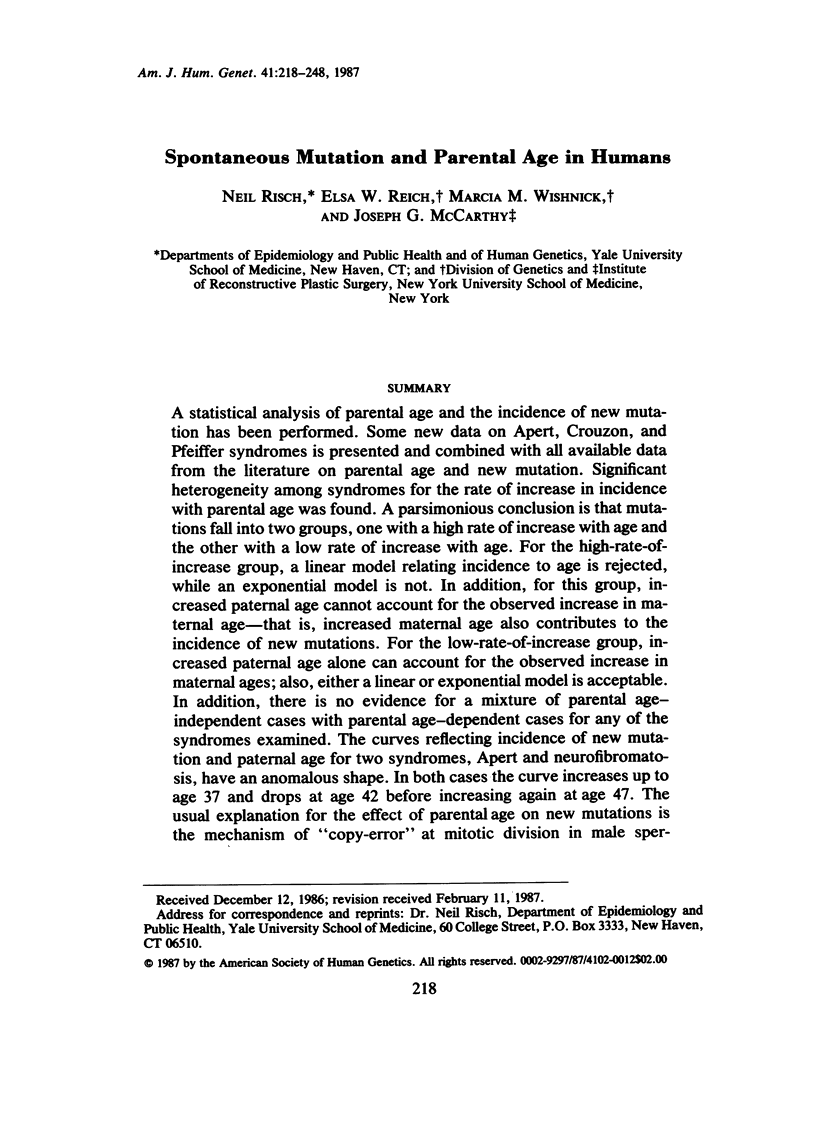
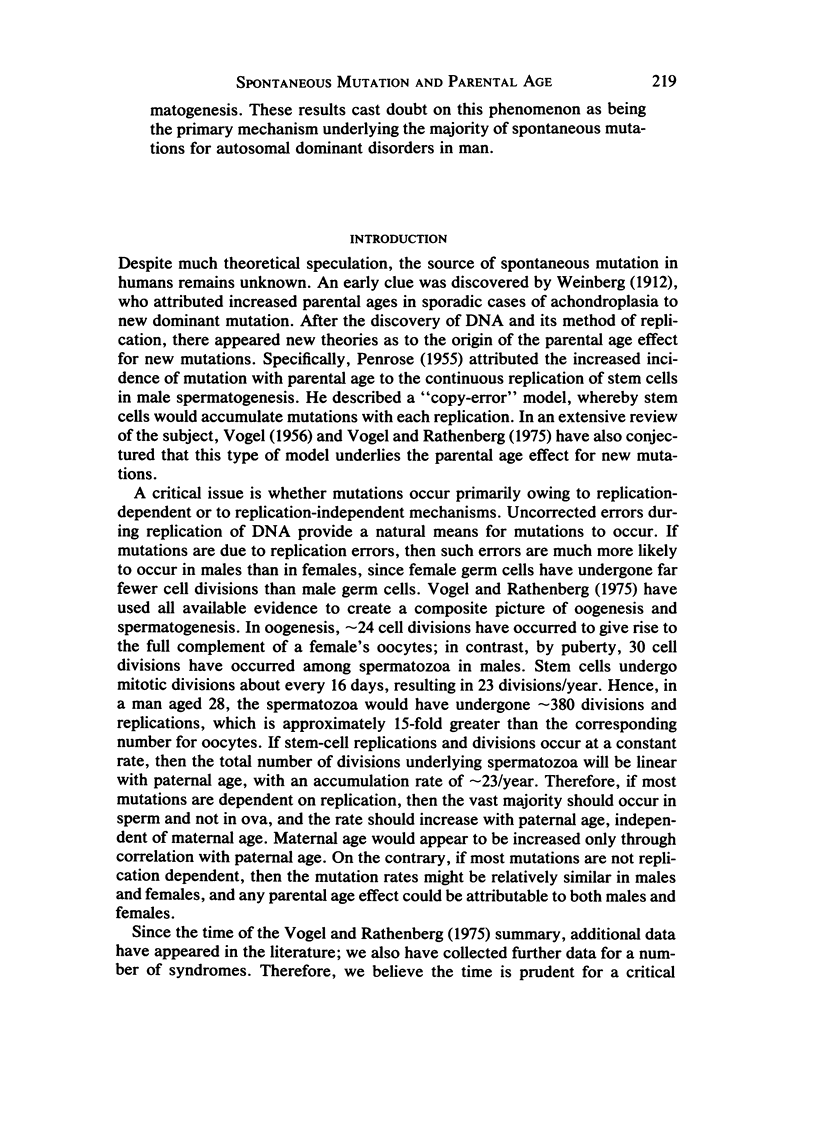
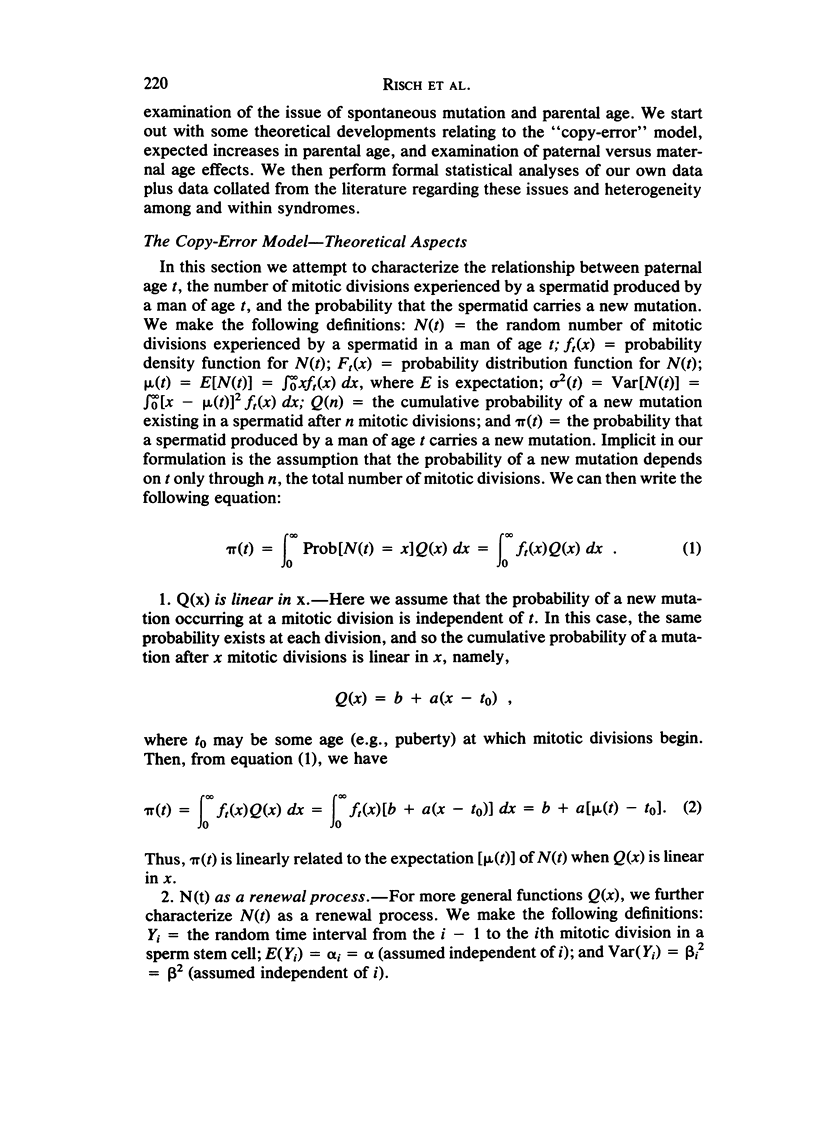
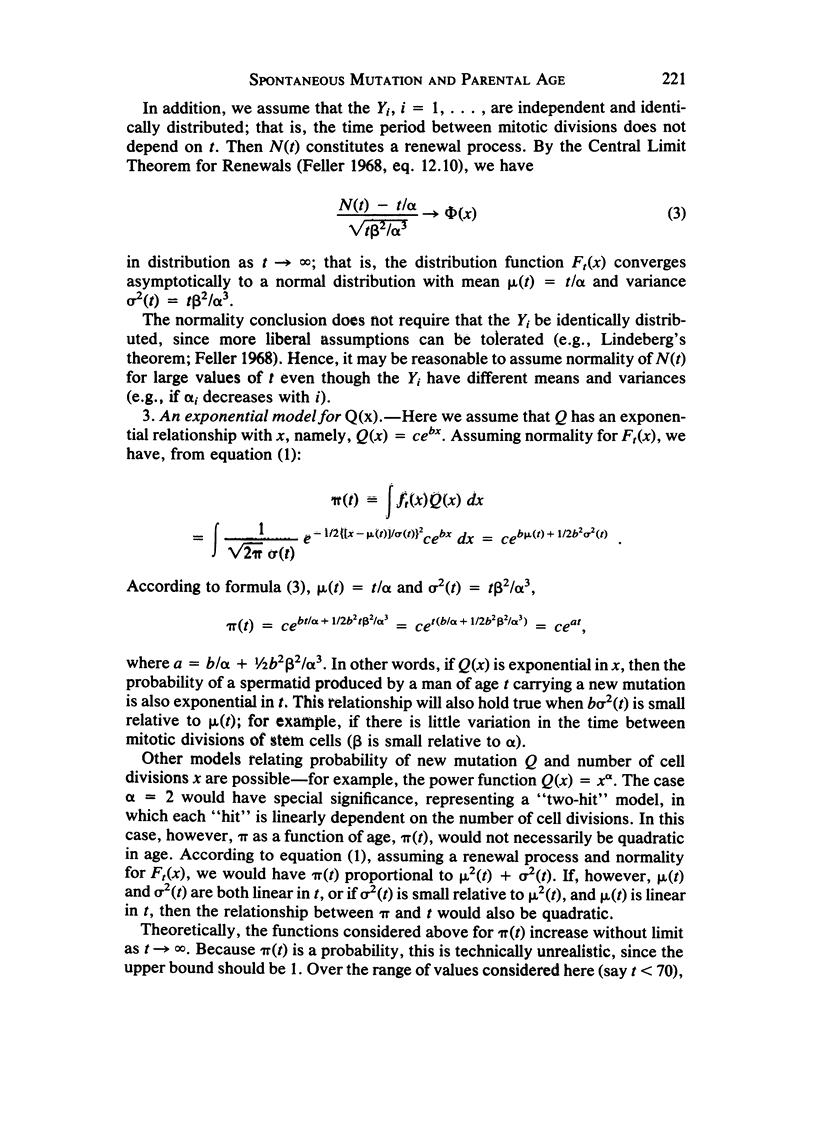
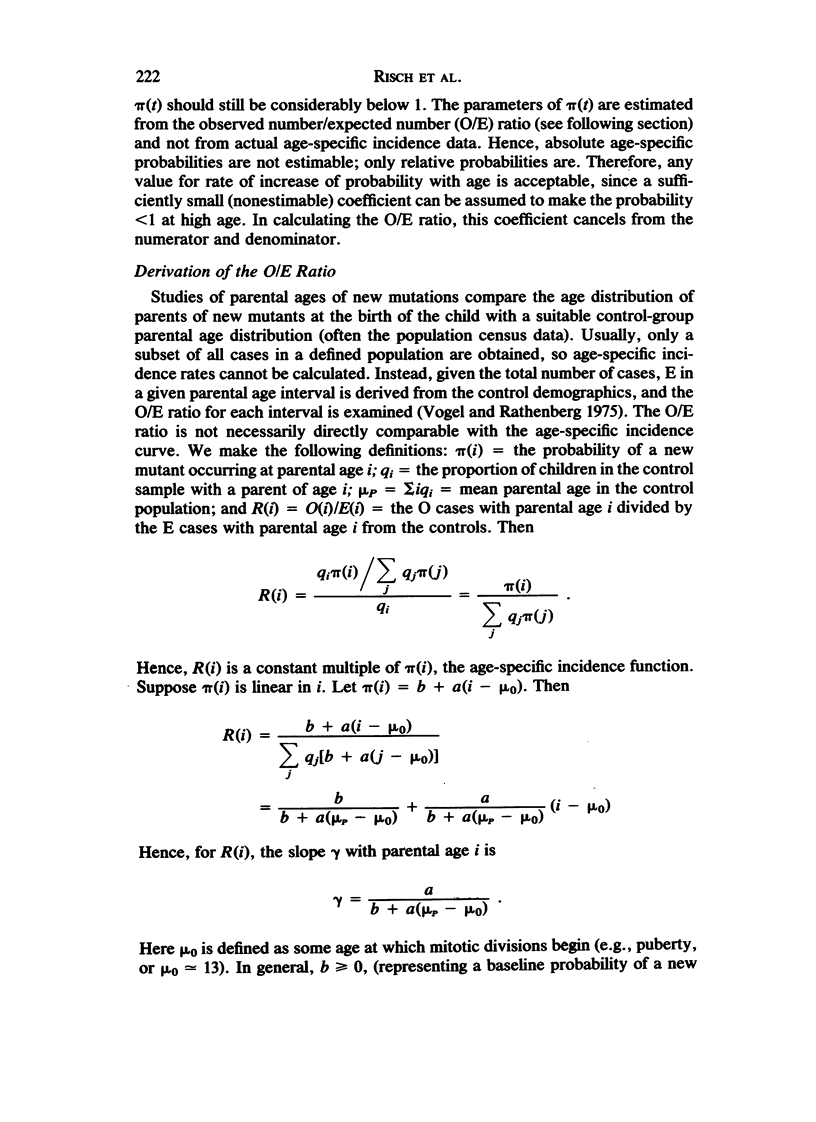
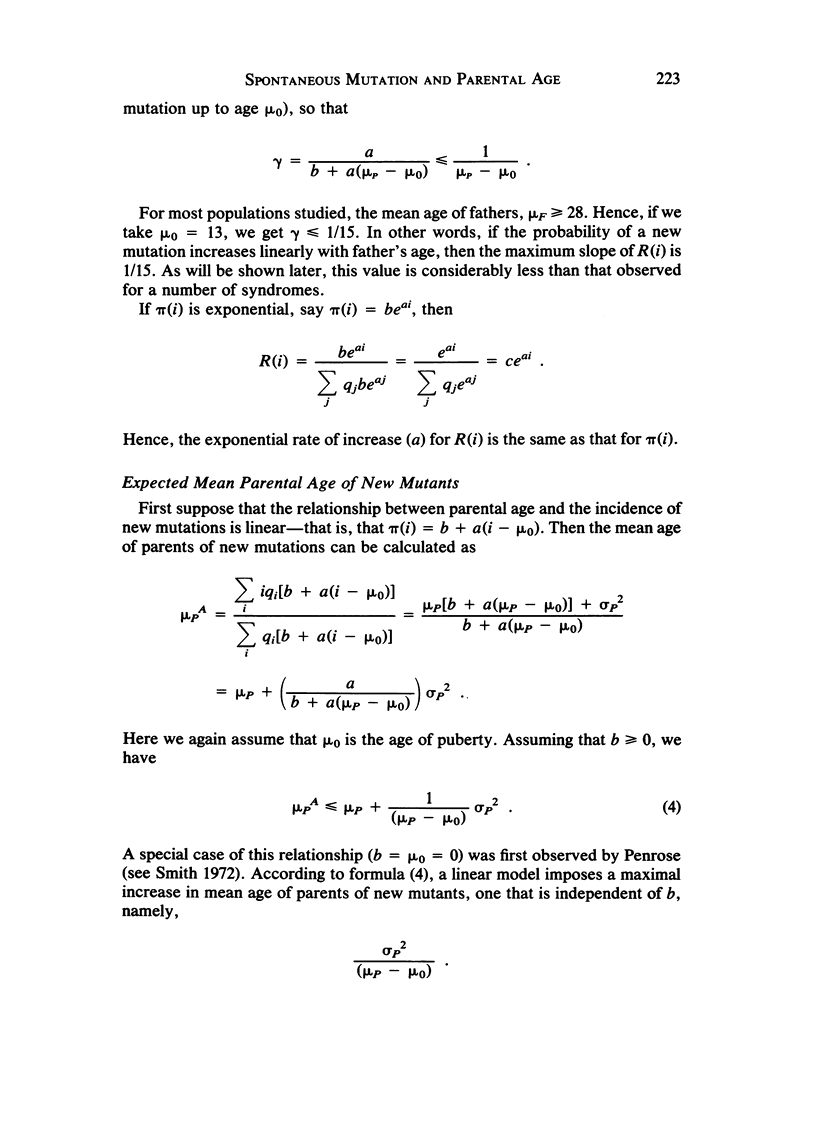
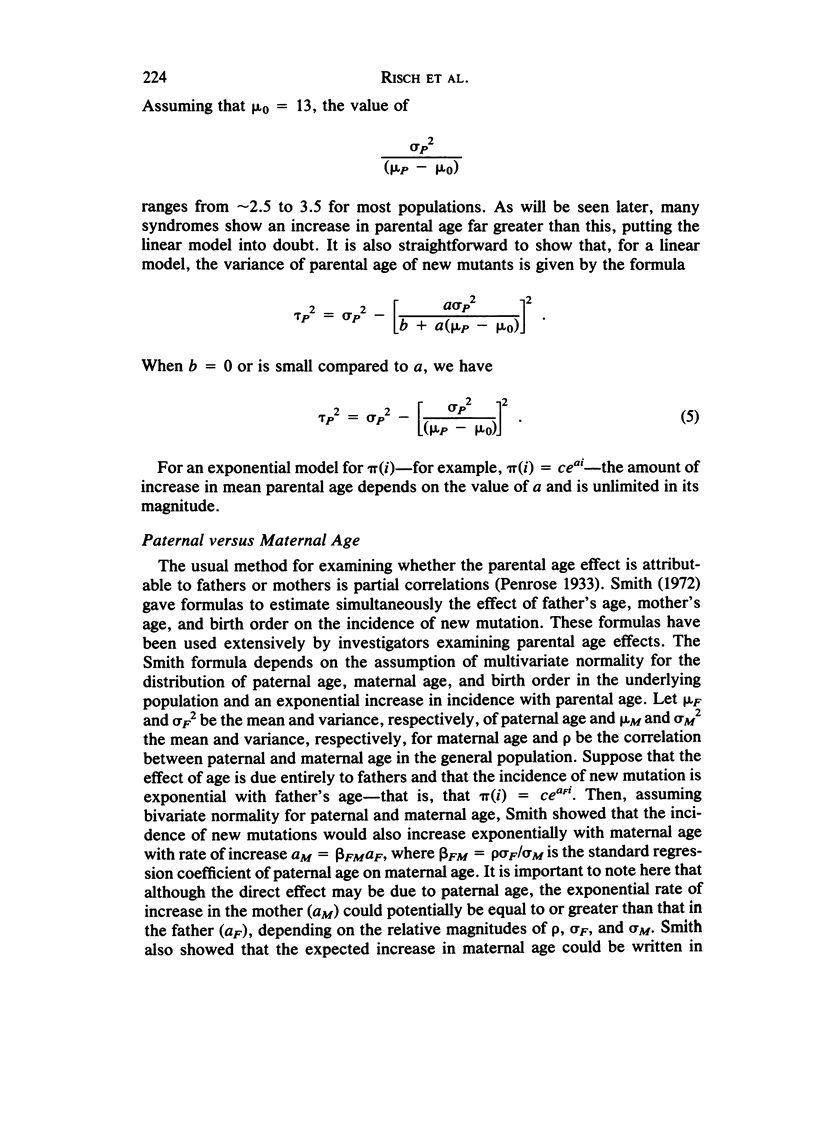
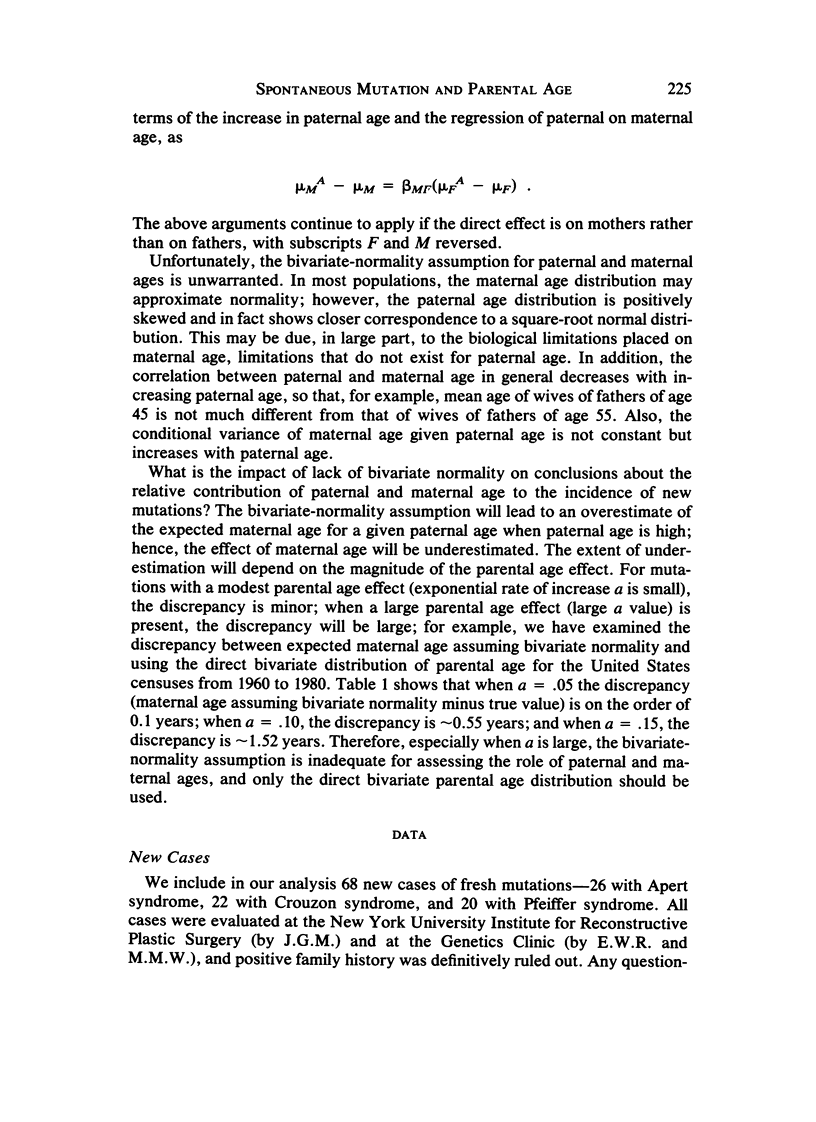
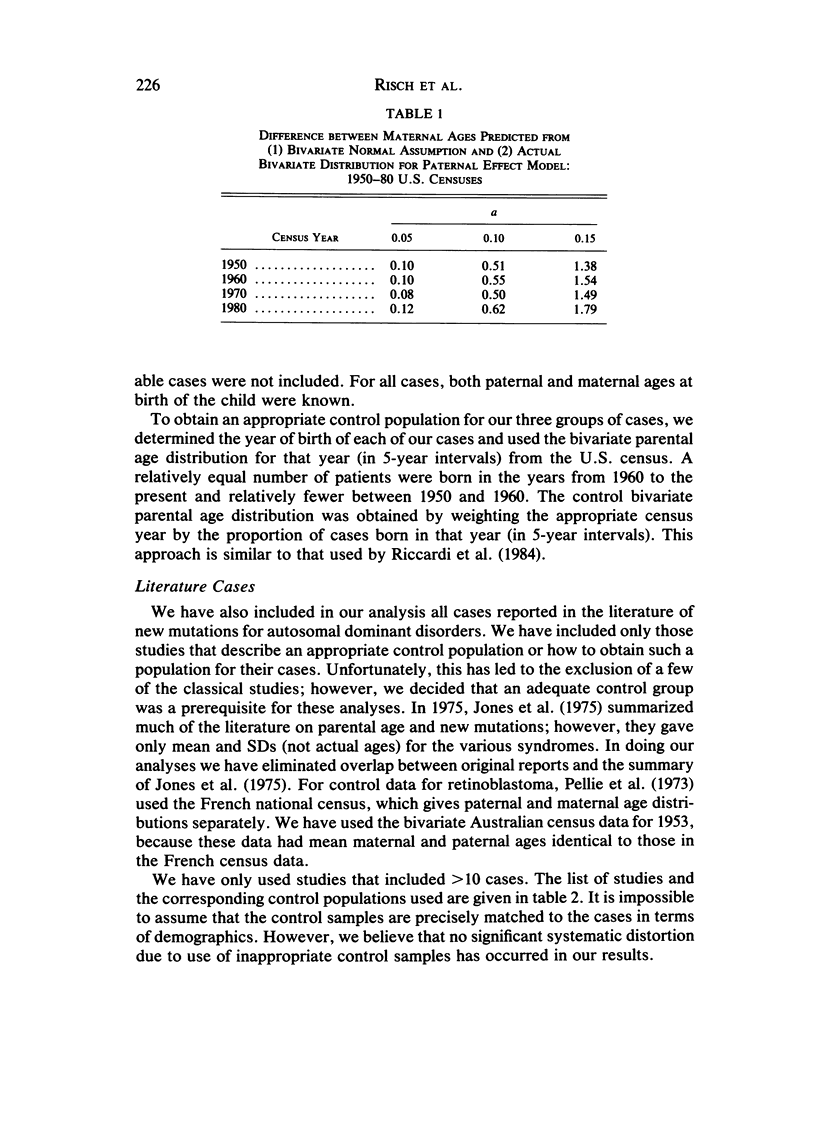
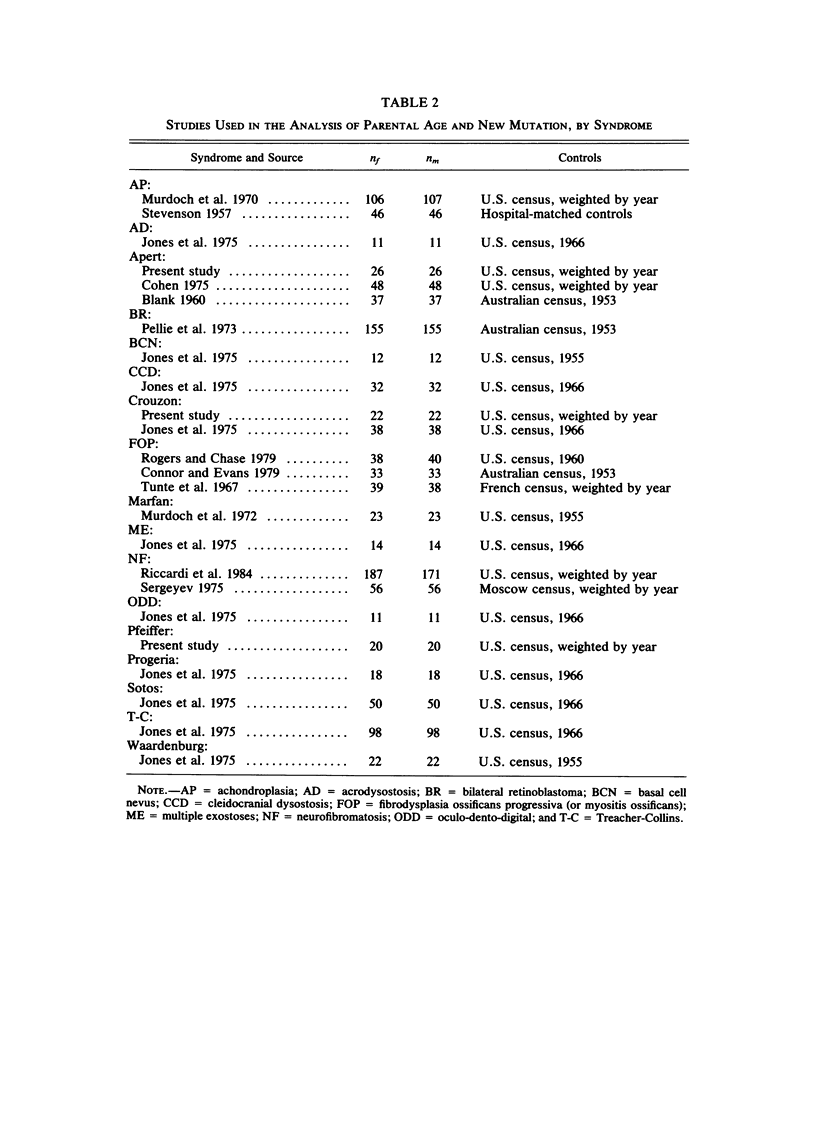
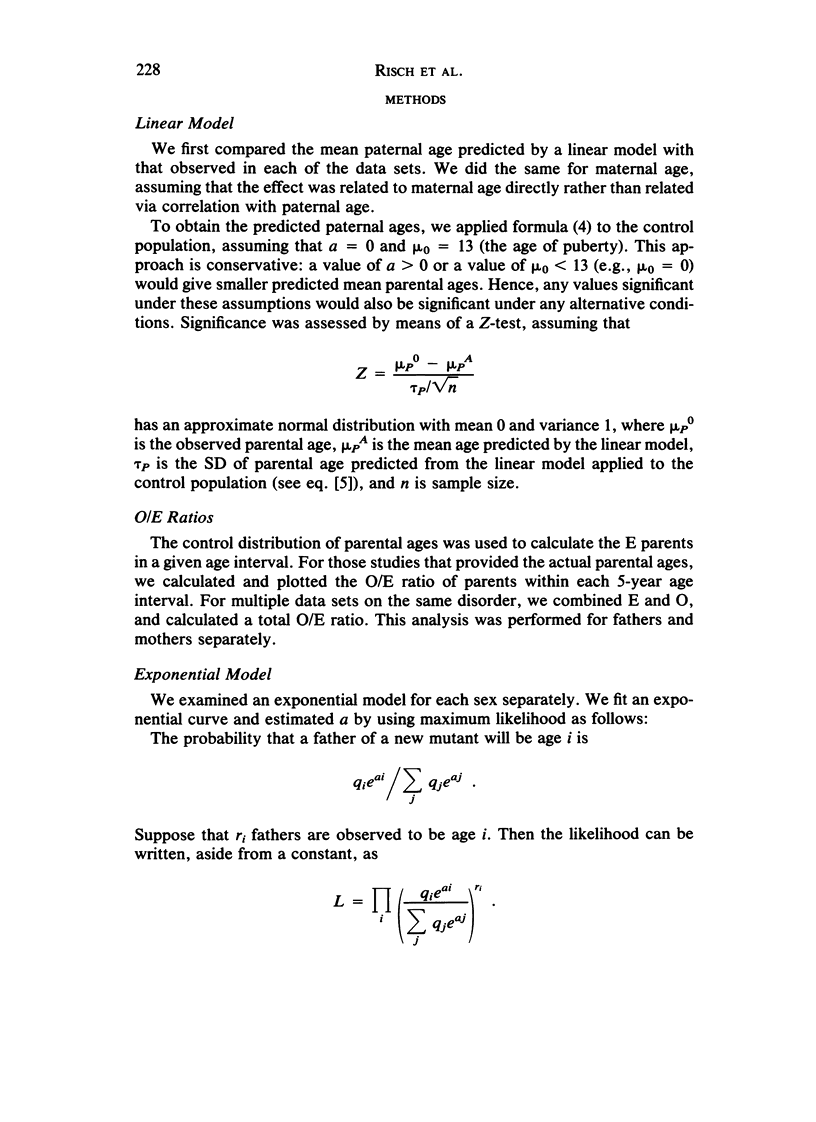
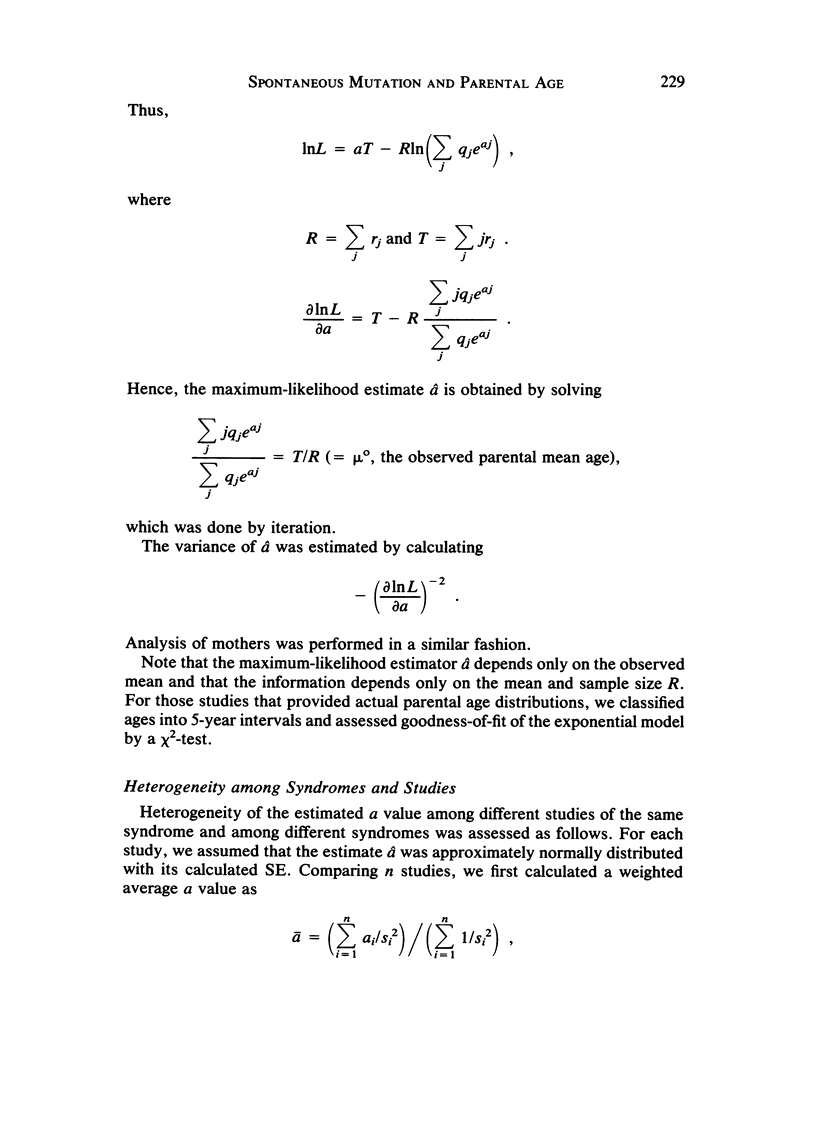
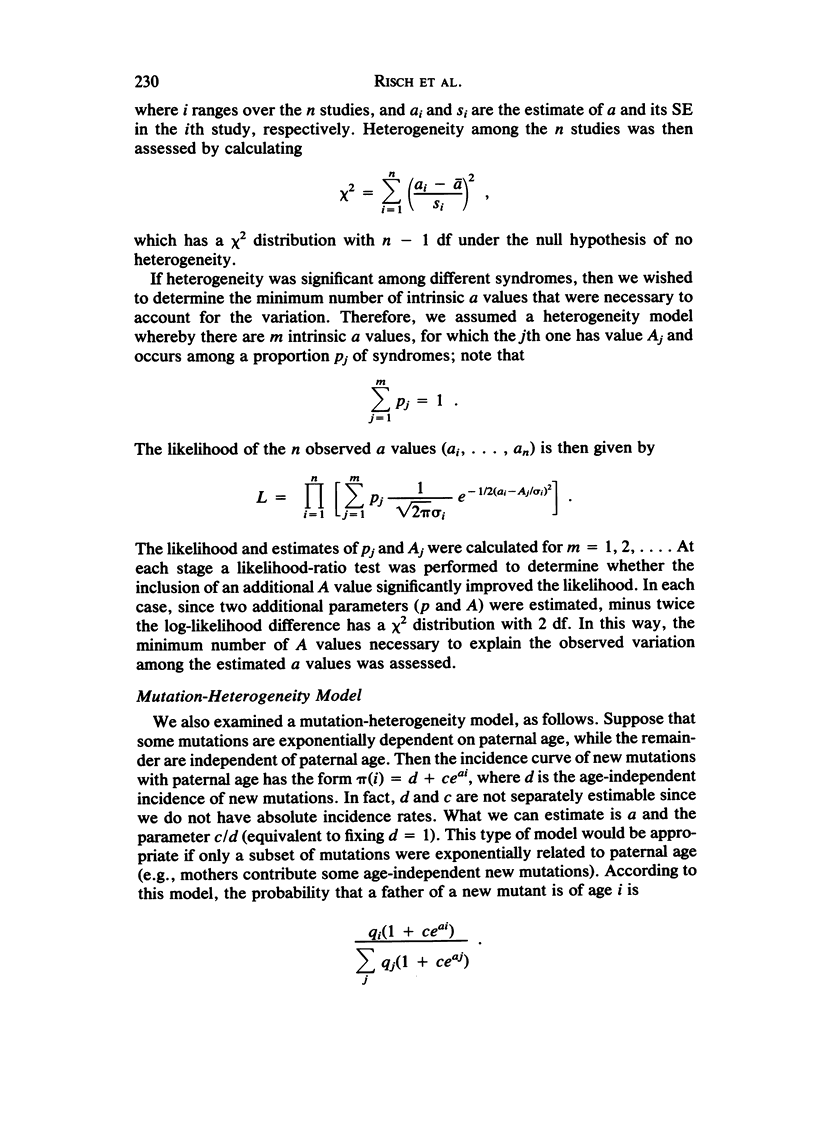
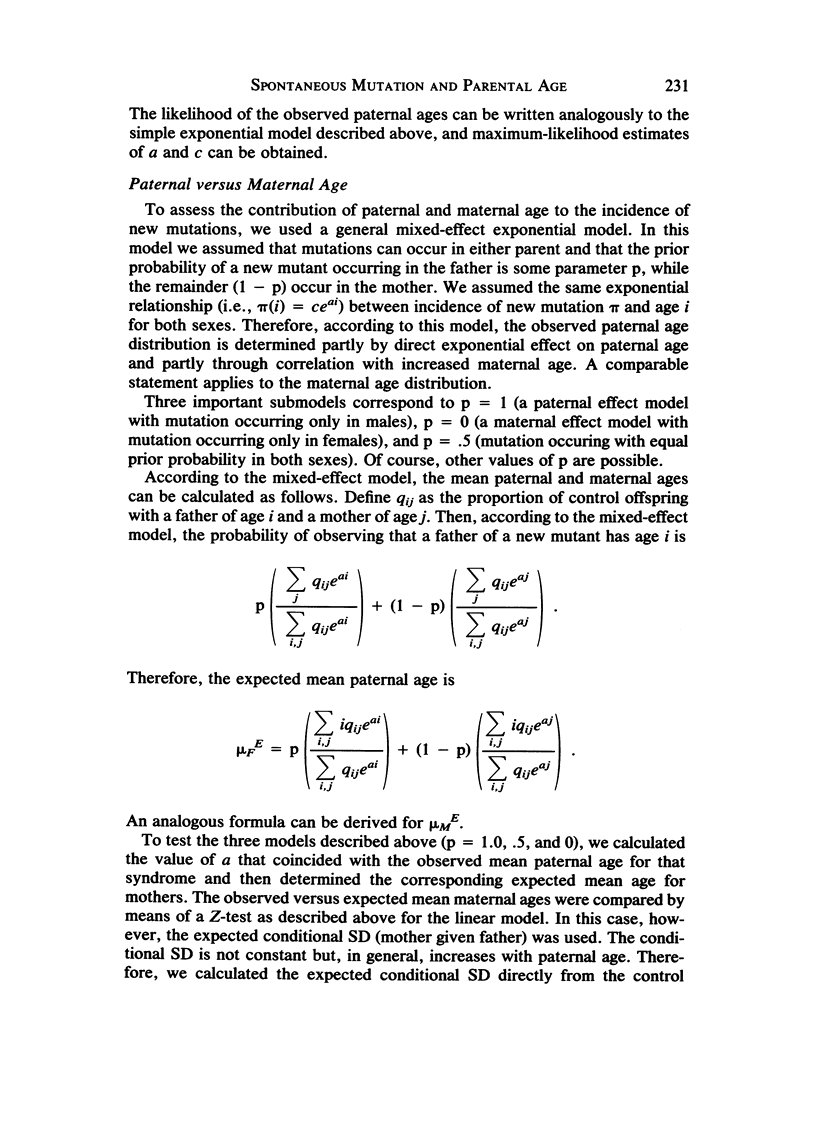
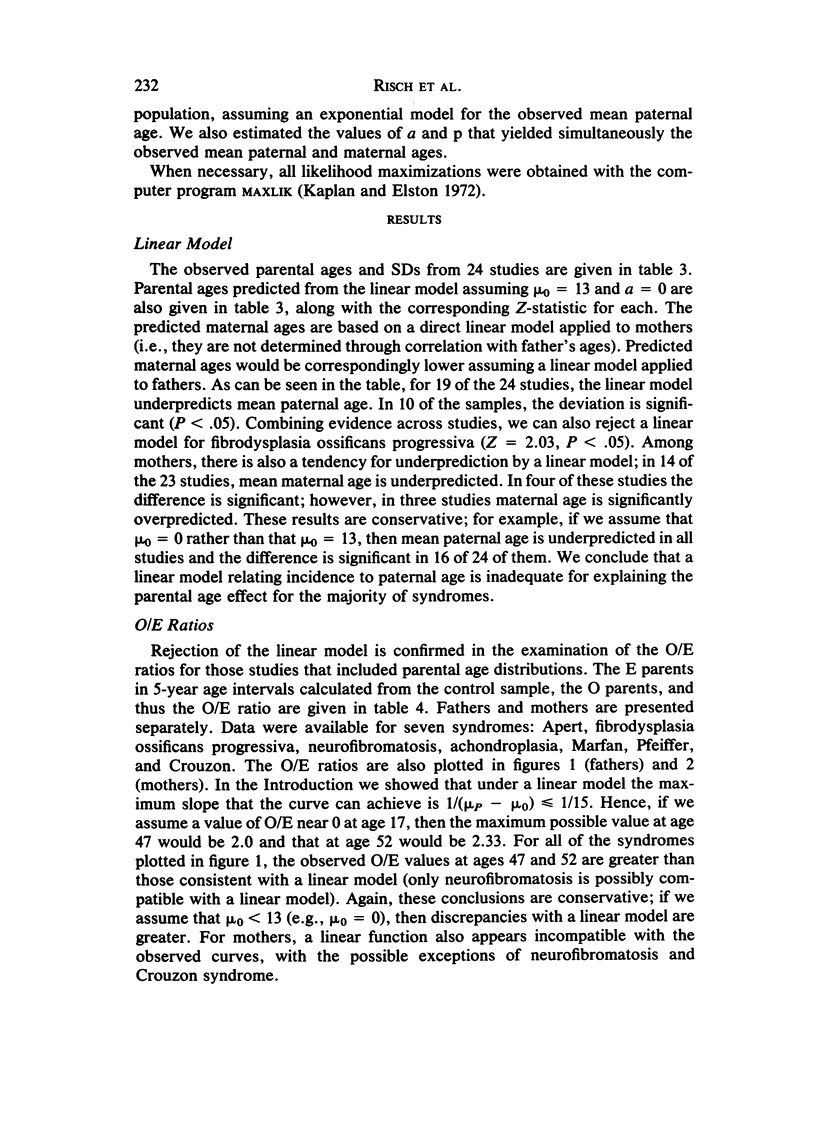
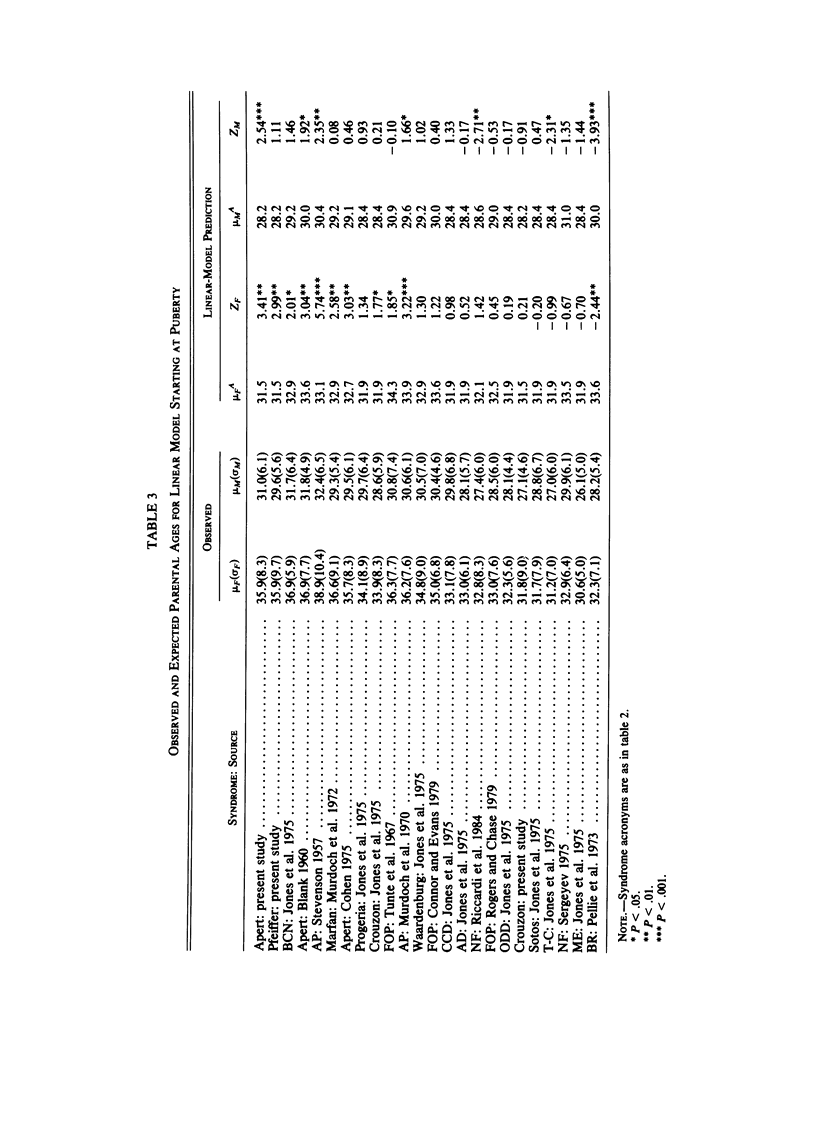
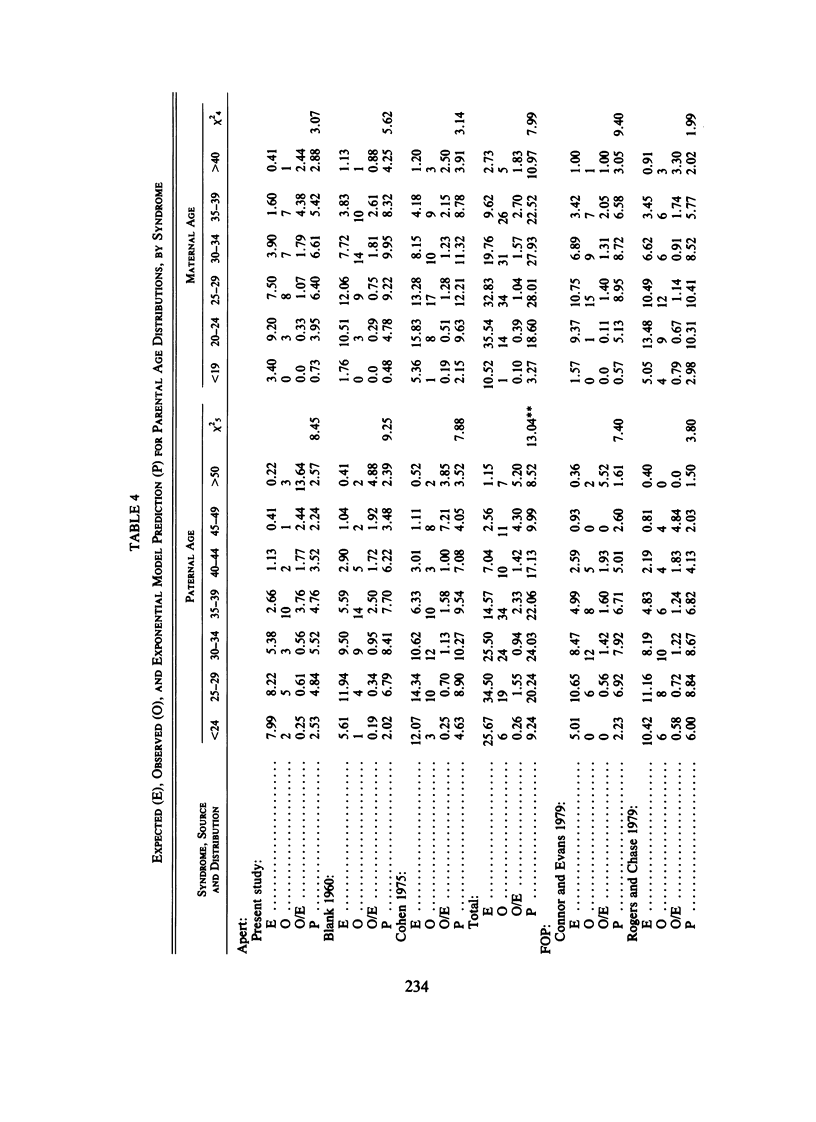
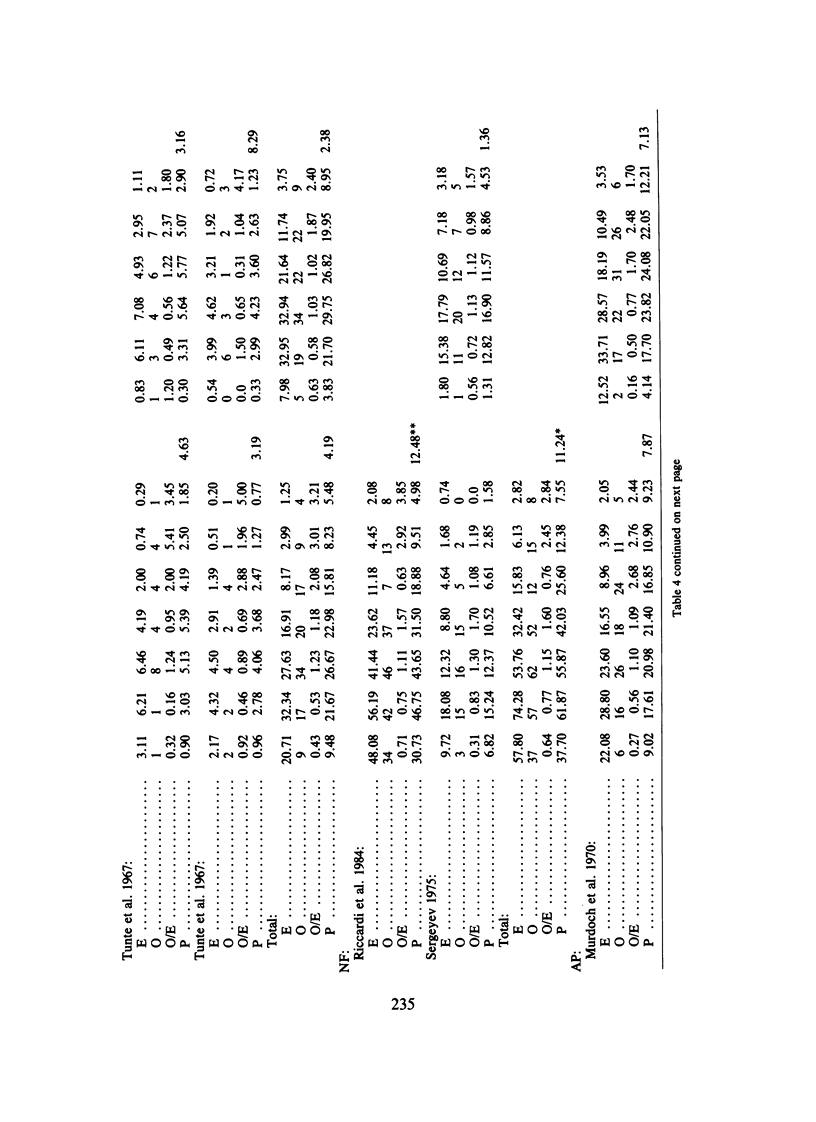

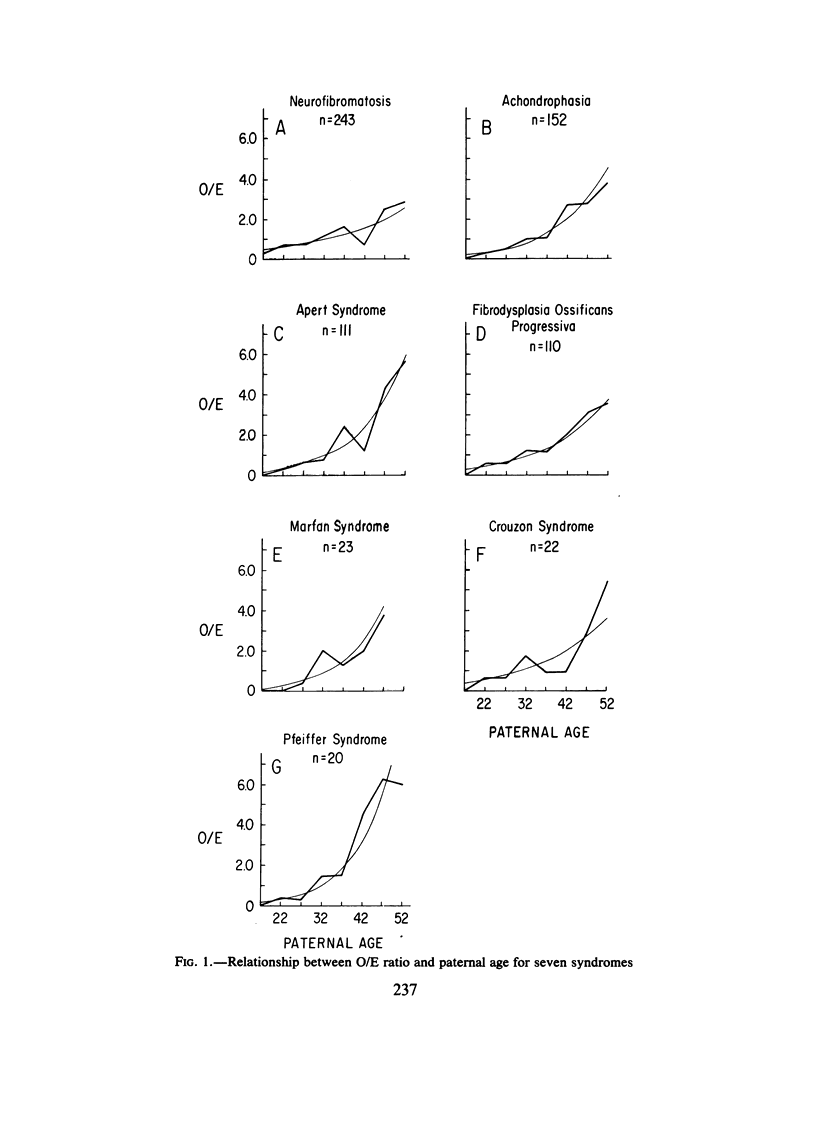
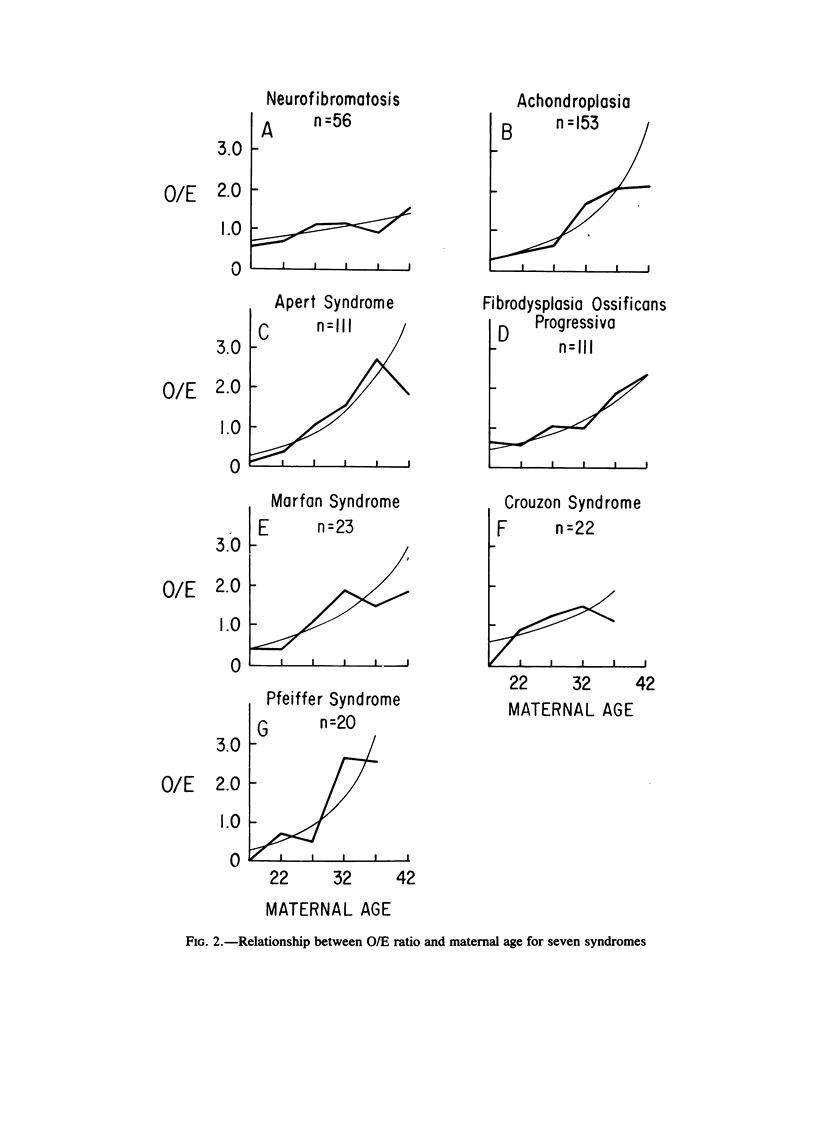
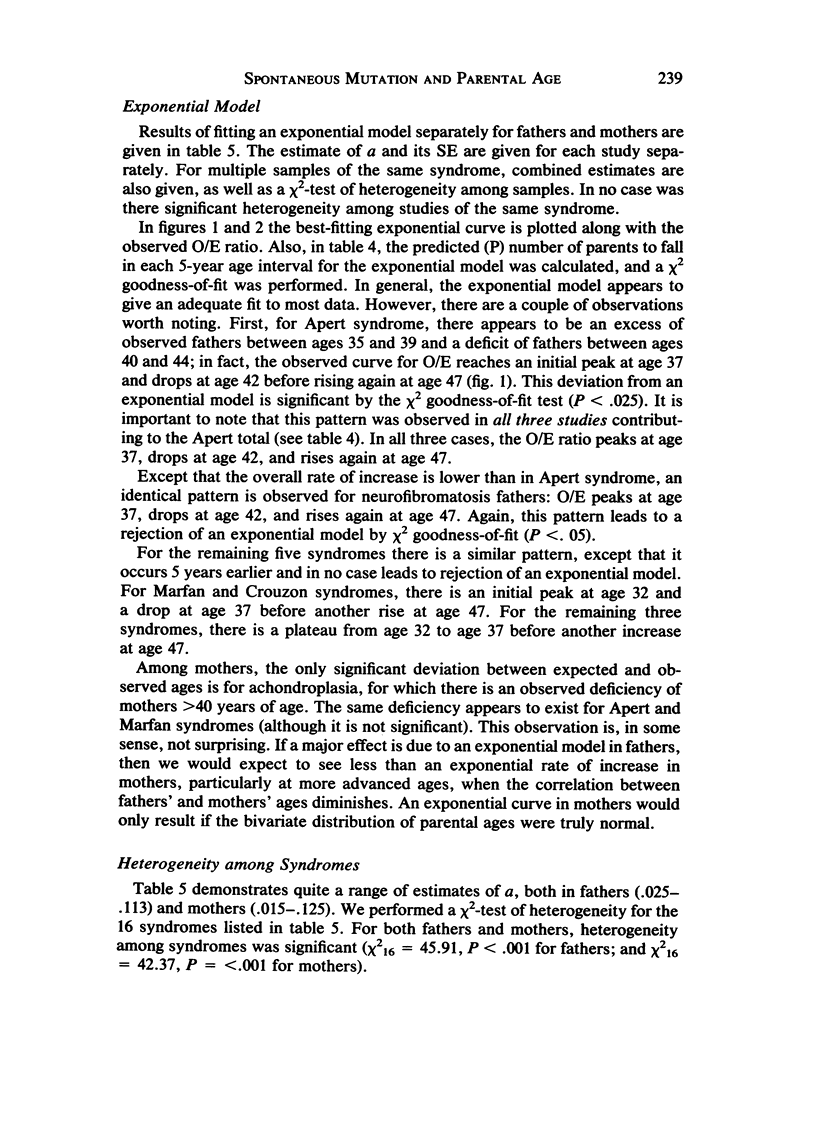
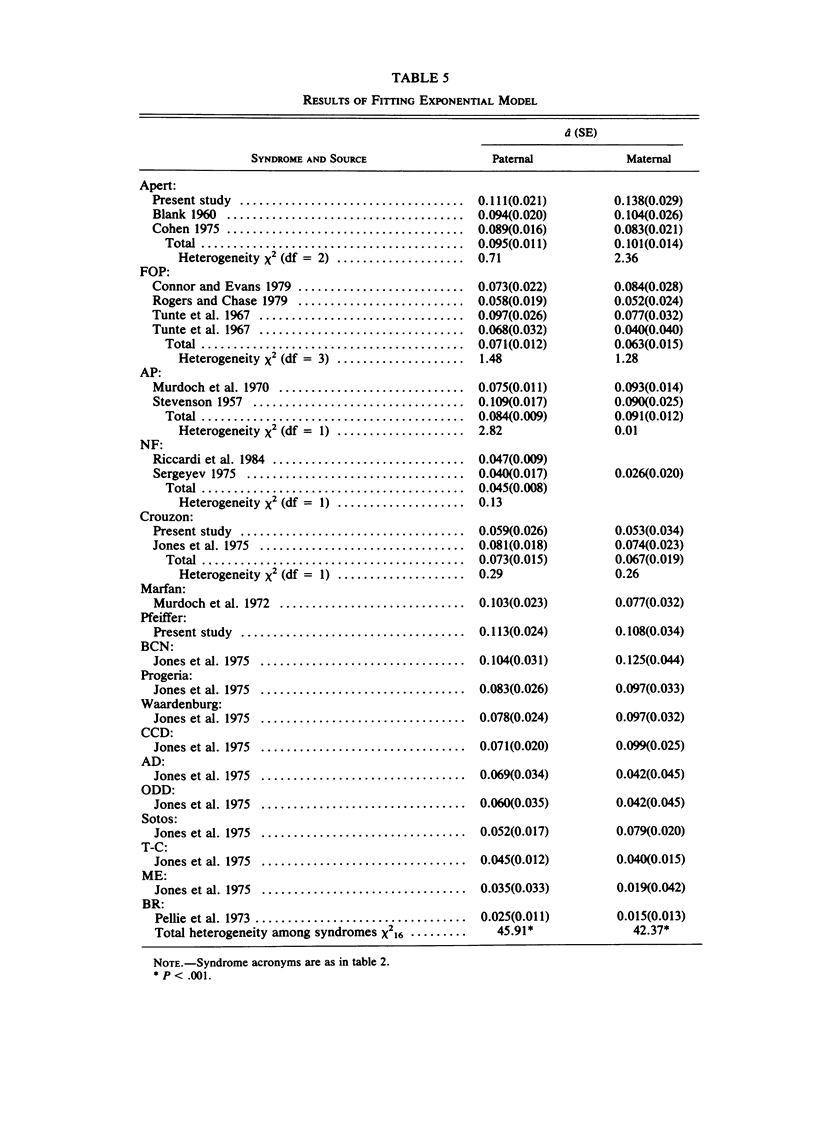
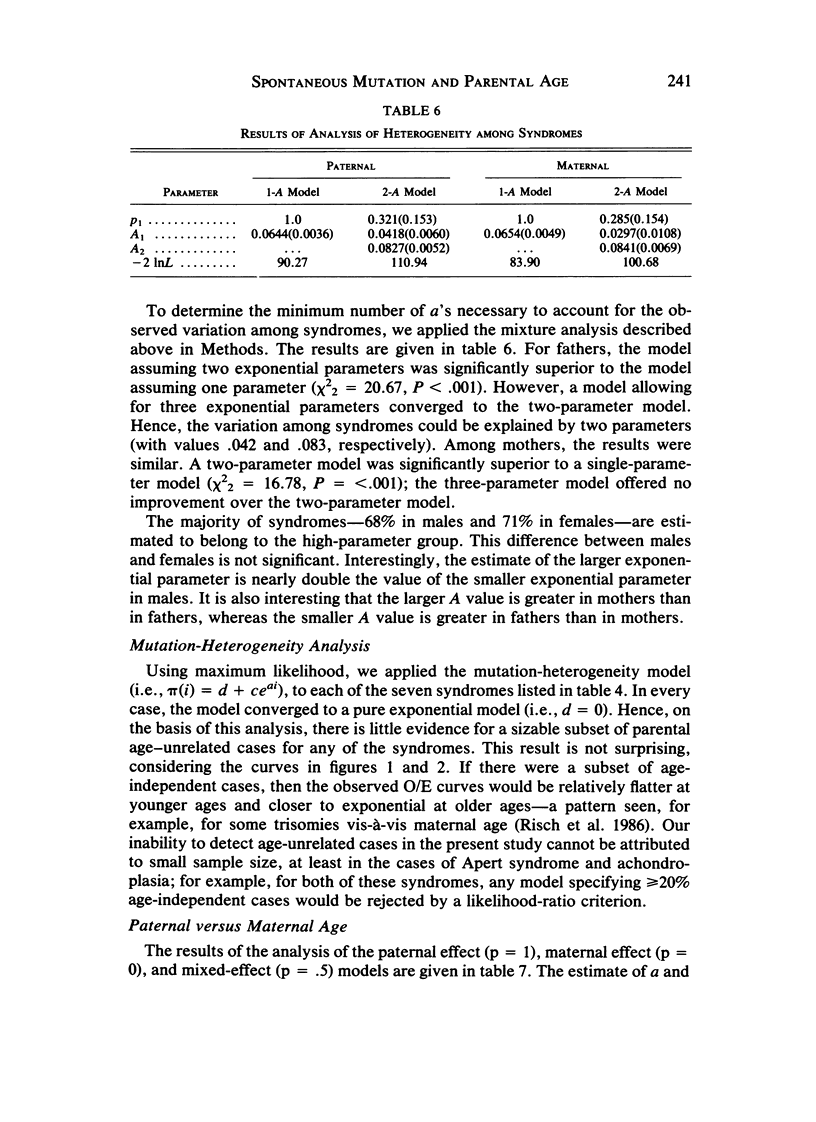

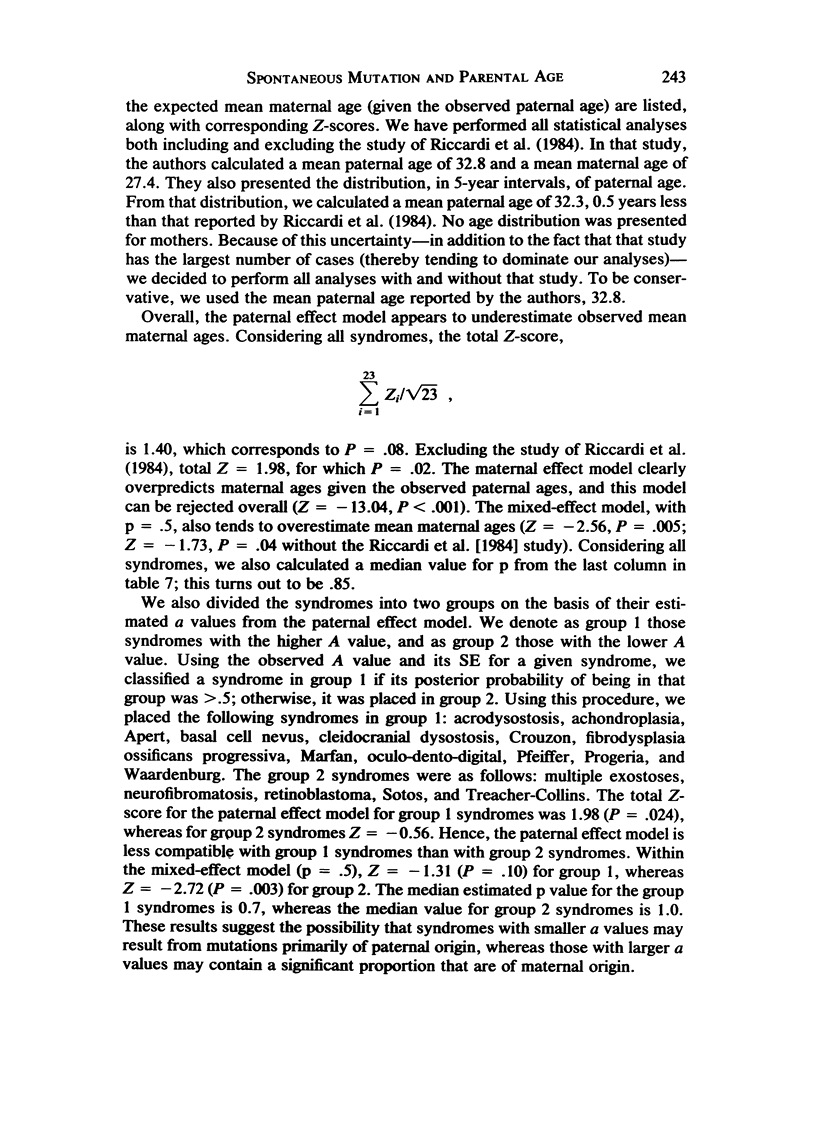
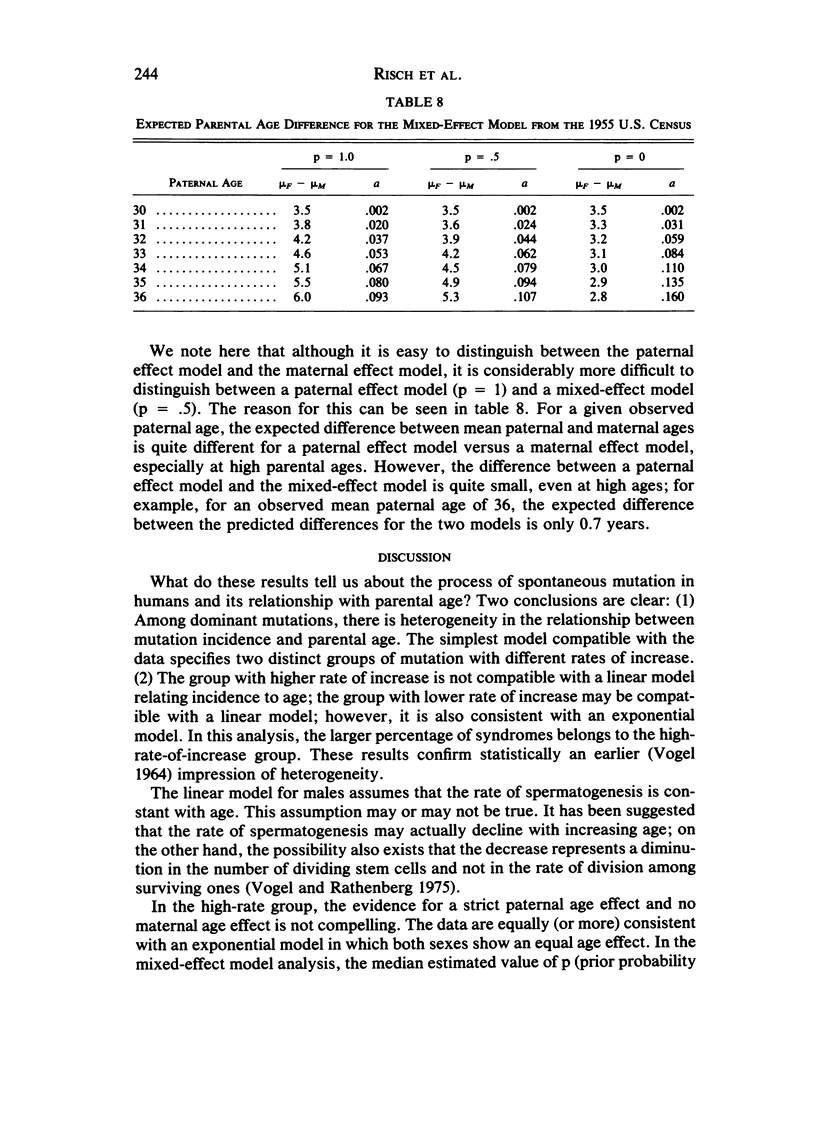
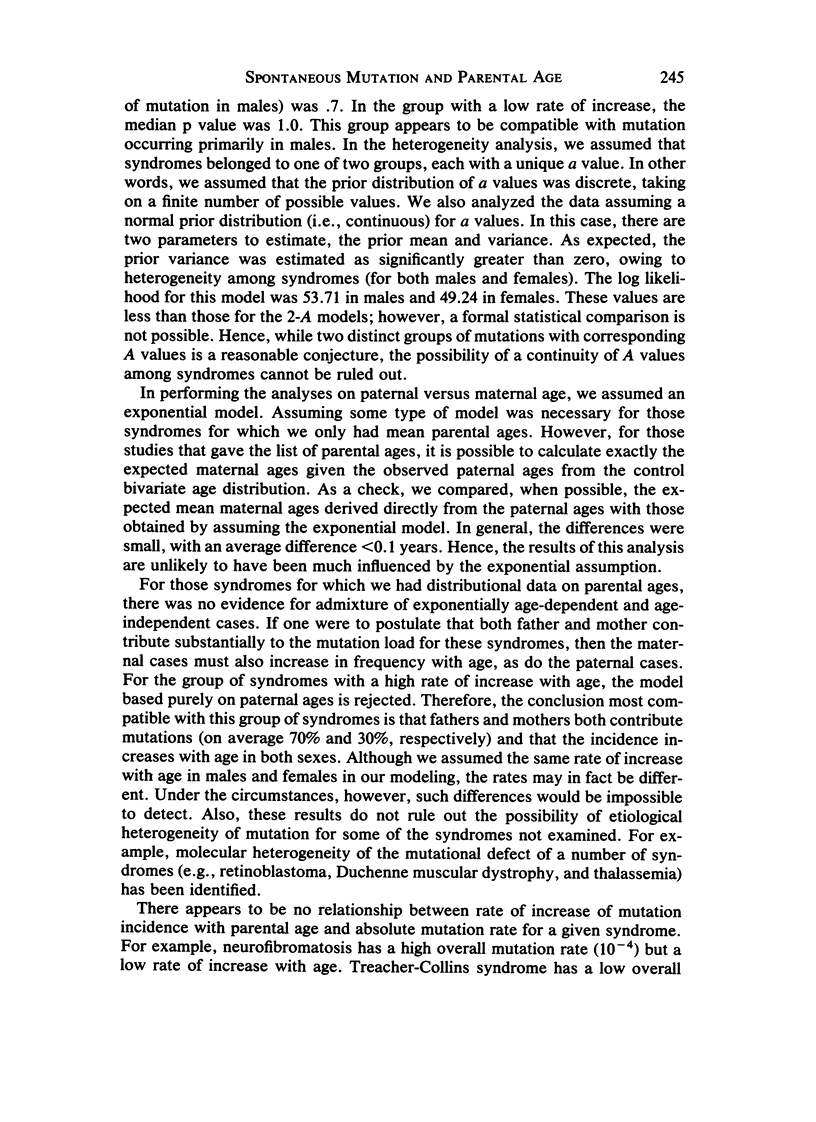
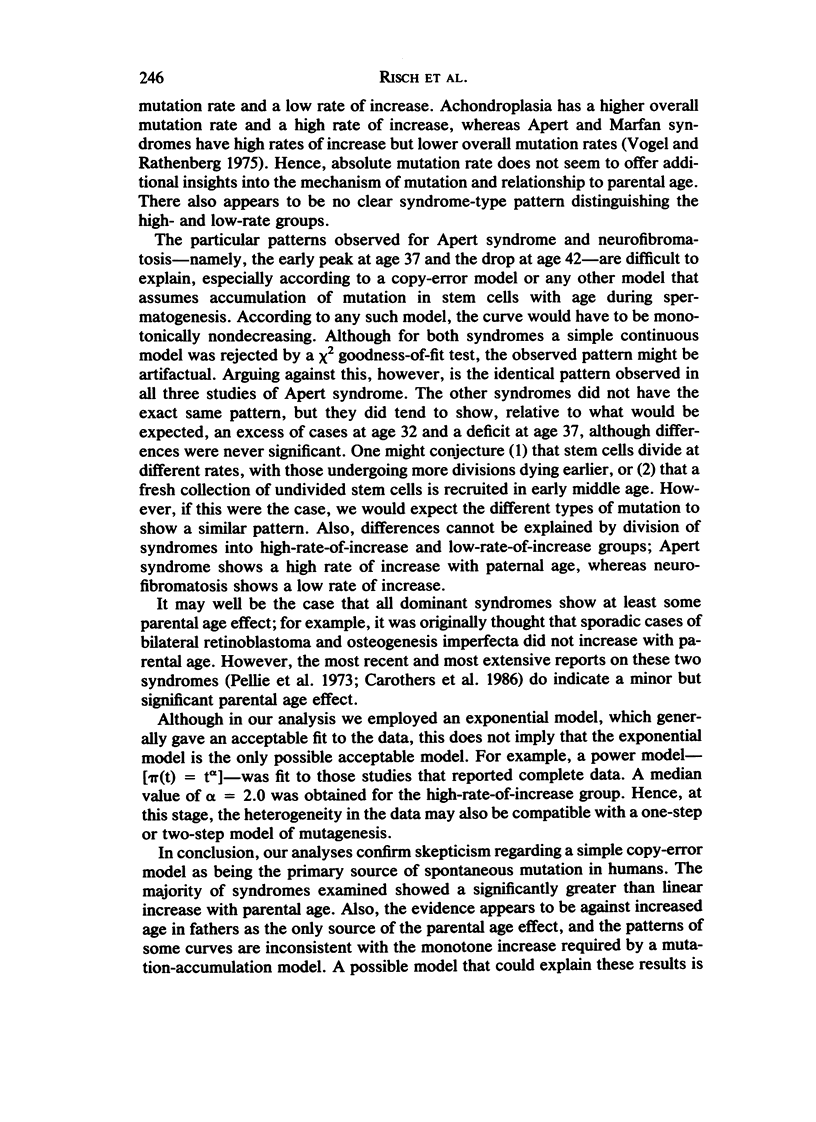
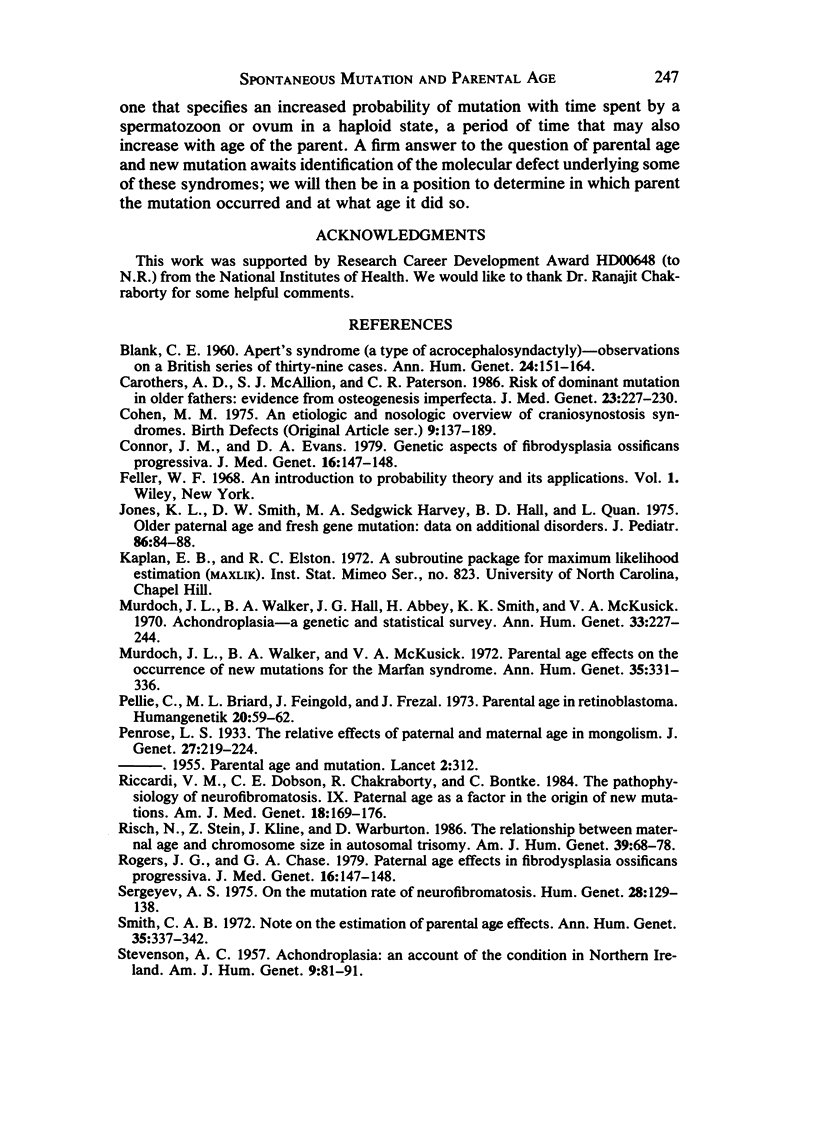
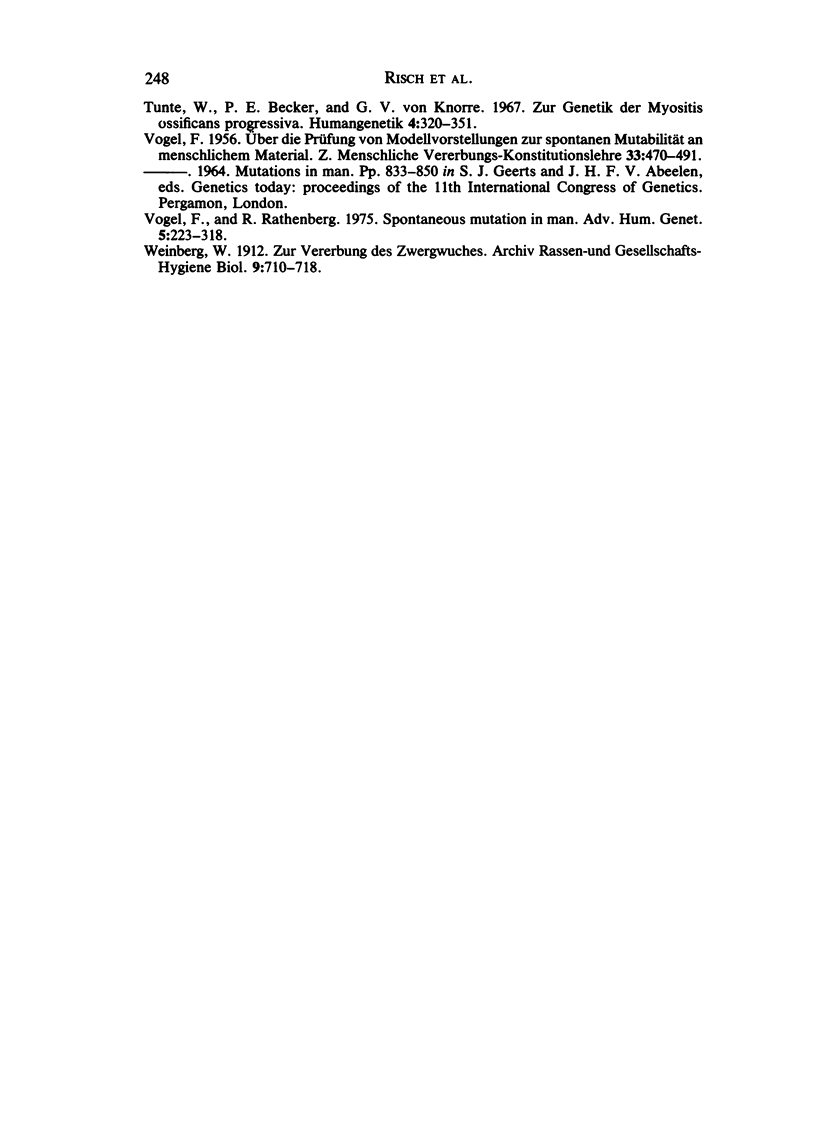
Selected References
These references are in PubMed. This may not be the complete list of references from this article.
- BLANK C. E. Apert's syndrome (a type of acrocephalosyndactyly)-observations on a British series of thirty-nine cases. Ann Hum Genet. 1960 May;24:151–164. doi: 10.1111/j.1469-1809.1959.tb01728.x. [DOI] [PubMed] [Google Scholar]
- Carothers A. D., McAllion S. J., Paterson C. R. Risk of dominant mutation in older fathers: evidence from osteogenesis imperfecta. J Med Genet. 1986 Jun;23(3):227–230. doi: 10.1136/jmg.23.3.227. [DOI] [PMC free article] [PubMed] [Google Scholar]
- Cohen M. M., Jr An etiologic and nosologic overview of craniosynostosis syndromes. Birth Defects Orig Artic Ser. 1975;11(2):137–189. [PubMed] [Google Scholar]
- Jones K. L., Smith D. W., Harvey M. A., Hall B. D., Quan L. Older paternal age and fresh gene mutation: data on additional disorders. J Pediatr. 1975 Jan;86(1):84–88. doi: 10.1016/s0022-3476(75)80709-8. [DOI] [PubMed] [Google Scholar]
- Murdoch J. L., Walker B. A., Hall J. G., Abbey H., Smith K. K., McKusick V. A. Achondroplasia--a genetic and statistical survey. Ann Hum Genet. 1970 Jan;33(3):227–244. doi: 10.1111/j.1469-1809.1970.tb01648.x. [DOI] [PubMed] [Google Scholar]
- Murdoch J. L., Walker B. A., McKusick V. A. Parental age effects on the occurrence of new mutations for the Marfan syndrome. Ann Hum Genet. 1972 Mar;35(3):331–336. doi: 10.1111/j.1469-1809.1957.tb01406.x. [DOI] [PubMed] [Google Scholar]
- Pellié C., Briard M. L., Feingold J., Frézal J. Parental age in retinoblastoma. Humangenetik. 1973;20(1):59–62. doi: 10.1007/BF00280877. [DOI] [PubMed] [Google Scholar]
- Riccardi V. M., Dobson C. E., 2nd, Chakraborty R., Bontke C. The pathophysiology of neurofibromatosis: IX. Paternal age as a factor in the origin of new mutations. Am J Med Genet. 1984 May;18(1):169–176. doi: 10.1002/ajmg.1320180121. [DOI] [PubMed] [Google Scholar]
- Risch N., Stein Z., Kline J., Warburton D. The relationship between maternal age and chromosome size in autosomal trisomy. Am J Hum Genet. 1986 Jul;39(1):68–78. [PMC free article] [PubMed] [Google Scholar]
- Rogers J. G., Chase G. A. Paternal age effect in fibrodysplasia ossificans progressiva. J Med Genet. 1979 Apr;16(2):147–148. doi: 10.1136/jmg.16.2.147. [DOI] [PMC free article] [PubMed] [Google Scholar]
- Rogers J. G., Chase G. A. Paternal age effect in fibrodysplasia ossificans progressiva. J Med Genet. 1979 Apr;16(2):147–148. doi: 10.1136/jmg.16.2.147. [DOI] [PMC free article] [PubMed] [Google Scholar]
- STEVENSON A. C. Achondroplasia: an account of the condition in Northern Ireland. Am J Hum Genet. 1957 Mar;9(1):81–91. [PMC free article] [PubMed] [Google Scholar]
- Sergeyev A. S. On the mutation rate of neurofibromatosis. Humangenetik. 1975 Jun 19;28(2):129–138. doi: 10.1007/BF00735745. [DOI] [PubMed] [Google Scholar]
- Smith C. A. Note on the estimation of parental age effects. Ann Hum Genet. 1972 Mar;35(3):337–342. doi: 10.1111/j.1469-1809.1957.tb01407.x. [DOI] [PubMed] [Google Scholar]
- Tünte W., Becker P. E., Knorre G. V. Zur Genetik der Myositis ossificans progressiva. Humangenetik. 1967;4(4):320–351. doi: 10.1007/BF00285740. [DOI] [PubMed] [Google Scholar]
- VOGEL F. Uber die Prüfung von Modellvorstellungen zur spontanen Mutabilität an menschlichem Material. Z Mensch Vererb Konstitutionsl. 1956;33(6):470–491. [PubMed] [Google Scholar]
- Vogel F., Rathenberg R. Spontaneous mutation in man. Adv Hum Genet. 1975;5:223–318. doi: 10.1007/978-1-4615-9068-2_4. [DOI] [PubMed] [Google Scholar]


